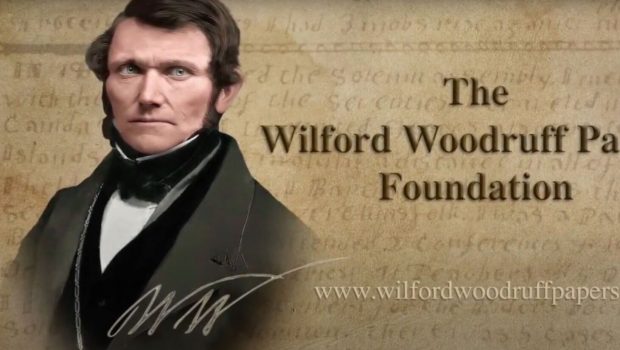BYU students use technology to transcribe Wilford Woodruff documents
A team of four Brigham Young University students is working on a unique project for the Wilford Woodruff Papers Foundation.
“We’re working on something that, to my knowledge, hasn’t been done before,” said Bryce Lunceford, one of the students.
The team — Lunceford, Amber Oldroyd, Paul Smith and Nathan Christiansen, all part of BYU’s applied and computational math program — are using computers to help assist those transcribing the writings of early Latter-day Saint leader Wilford Woodruff.
What is the Wilford Woodruff Papers project?
Wilford Woodruff was one of the earliest and most successful missionaries of the restored Latter-day Saint faith. He served seven missions that spanned more than 10 years before becoming the fourth president of The Church of Jesus Christ of Latter-day Saints.
Starting in 1828, Woodruff’s meticulous records document his extensive ministry and missionary service, the teachings of Joseph Smith and other leaders, daily happenings, his witness of the church’s Restoration and other significant events until his death in 1898.
The Wilford Woodruff Papers Foundation is working in cooperation with the Wilford Woodruff Family Association and with the Church History Department to locate and digitize all of the early church leader’s surviving records.
The foundation has located, digitized and organized more than 114,000 pages of President Woodruff’s writings since the project was launched on March 1, 2020, with thousands of documents still to go.
How computers are transcribing Woodruff documents
To accurately transcribe and verify Woodruff’s tens of thousands of documents would take thousands of hours and require millions of dollars. The students hope to help use computers to complete the task within 10 years, according to a Wilford Woodruff Papers Foundation news release.
“Wilford Woodruff recorded his eyewitness account of the Restoration of the gospel in his journal and other documents using not only English written in longhand, but also two varieties of shorthand, the Deseret Alphabet, sporadic Latin and Greek and more than 3,000 unique symbols,” the news release said. “The skills required to determine whether a curve and dot on a page is a cursive letter, a shorthand mark or a symbol is mind-boggling.”
The current transcription process requires one person to manually type each word as read in the handwritten version, then two people review it.
The team of four BYU students is working to create an algorithm for the computer to differentiate and read the marks in Woodruff’s documents. The team is also using optical character recognition, a commonly used process of converting typed or handwritten documents into text.
Once transcribed, the team reviews the computer’s performance and makes adjustments to improve efficiency.
“We watch the network as it’s training and something called the lost function basically tells us how good the computer is at what we told it to do,” Lunceford said. “As we see the loss go down, that means the computer is getting better.”
Transcribing technology in the future
It’s an arduous process with some trial and error, but the team is optimistic that it will save time and resources in the long run. The technology could also be applied to other historical papers projects.
“It takes a lot of time to teach volunteers the skills that are needed to transcribe and if the computer can do the things that are currently being done by volunteers, then the transcription can be done a lot faster,” Christiansen said.
The project has not only added to the students’ professional experience but it has strengthened their faith.
Oldroyd has been inspired by Woodruff’s journals and is keeping one for her future posterity.
Learn more about the Wilford Woodruff Papers project by visiting wilfordwoodruffpapers.org.








Gloss